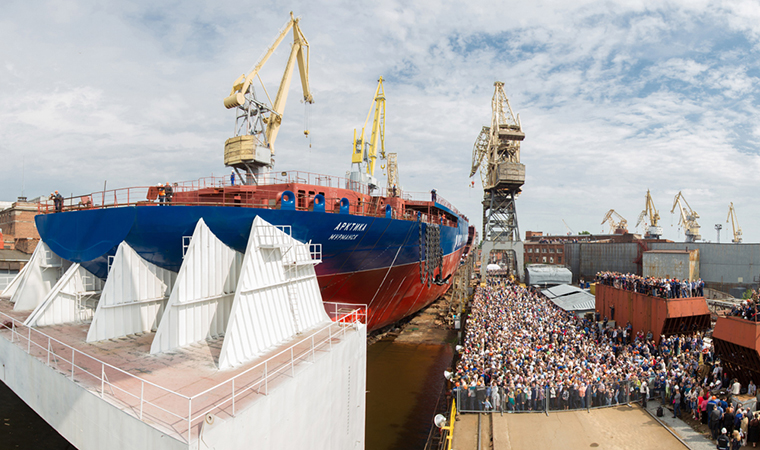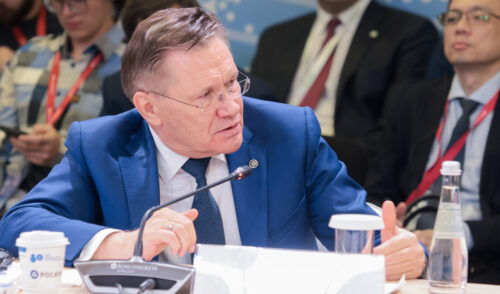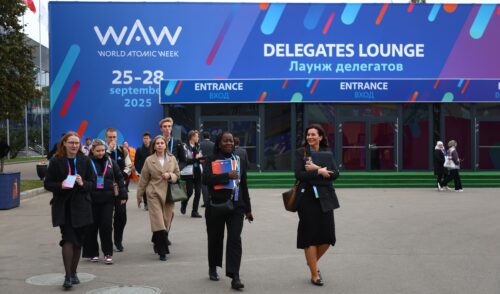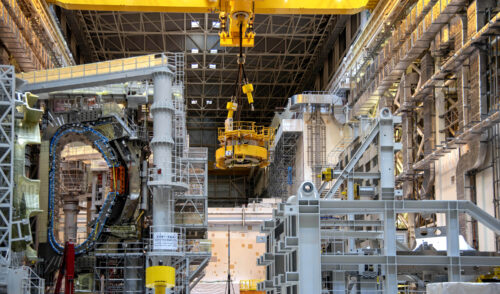
Next Generation Icebreaker Floated Out
back to contentsThe float-out ceremony at the Baltic Shipyard in Saint Petersburg brought together thousands of onlookers. Valentina Matviyenko, Chairman of Russia’s Federation Council, smashed a bottle of champagne against the board to send the nuclear icebreaker gliding down the slipway. “It is a prominent day for the Russian nuclear industry. The Arctic has been a raison d’être for many explorers. One of the harshest regions on our planet, it makes nuclear vessels, particularly the new icebreaker, indispensable. Harsh regions demand ultimate machinery. I am sure that the Arktika icebreaker will give a new impetus to the development of Arctic areas. And I am happy to see the young shipbuilders being the worthy successors to the previous generations of shipwrights. Thanks to those who has built this vessel. Its sight fills me with great pride in my country and people who build it. Thank you for upholding the traditions of Saint Petersburg shipbuilding. Your work is the pride and joy of the whole nation. Fair seas and following winds, the great Arktika!” she said in her welcoming speech.
Sergei Kirienko, CEO of Rosatom, noted, “This event is a great victory in all respects. Much effort has been made to float out Arktika, which has no counterparts in the world. Thanks to the Baltic Shipyard team, all the work was done on schedule, and the Arktika will join the fleet in late 2017. This icebreaker is a state-of-the-art vessel featuring unprecedented functionality and opening up new prospects for the country.”
Alexei Rakhmanov, President of United Shipbuilding Corporation (USC) in charge of the ship construction, thanked Rosatom for the trust put in the Baltic Shipyard and stressed that the icebreaker floated today is totally new in all respects, including technology, equipment, propulsion and the most up-to-date functionality in place. “No one in the world has yet managed to implement all the latest solutions within one project,” he said, welcoming the guests and shipbuilders. “The Arktika nuclear flagship is just the case. We did a lot of work to take the company out of bankruptcy; it is now truly up and running. God bless all those working for the benefit of our country!”
The nuclear flagship is now waiting to be fitted out afloat. The next step is to install a deck-house with captain’s bridge and living compartments. Then, after the completion of sea trials, the vessel will be transferred to Atomflot, a company that operates and maintains the Russian nuclear fleet. The commissioning is scheduled for December 2017. “We have already made transportation contracts involving the icebreaker, so we expect a timely release from USC. We have undertaken to support the transportation of liquefied natural gas from the Yamal LNG project in 2018,” Sergei Kirienko said. “Its gas output is growing year by year. We have already made contracts for 18 million tons.”
The contract between Atomflot and the Baltic Shipyard provides for the construction of three Project 22220 nuclear icebreakers. In May last year, the shipbuilders laid down Sibir (Siberia), the next vessel in the series. The construction of Ural, another icebreaker of the same type, is planned to begin in the fall of 2016.
Meanwhile, ZiO-Podolsk (a subsidiary of Atomenergomash, Rosatom’s nuclear engineering division) started to assemble the first reactor vessel of the RITM-200 propulsion unit to be installed in Sibir, a Project 22220 nuclear icebreaker. The plant has already finished welding the ring seam to join the bottom plate and the shell with nozzles. As reported earlier, Atomenergomash Group established an end-to-end production cycle – from design and manufacturing to assembly and delivery to the customer.
The next generation icebreaker is intended for escorting vessels (including capesize ships) and ship convoys in the Western Arctic all year round. The vessel’s double draft design allows for using it in Arctic waters and in estuaries of polar rivers (particularly, in shallow areas of the River Yenisei up to the port of Dudinka, and in the Gulf of Ob). The icebreaker can also function as a towing vessel for ships and other floating structures, as well as be used in rescue efforts, both on the ice and in open waters. The vessel can work its way through consolidated pack ice with a maximum thickness of 2.8 meters.




